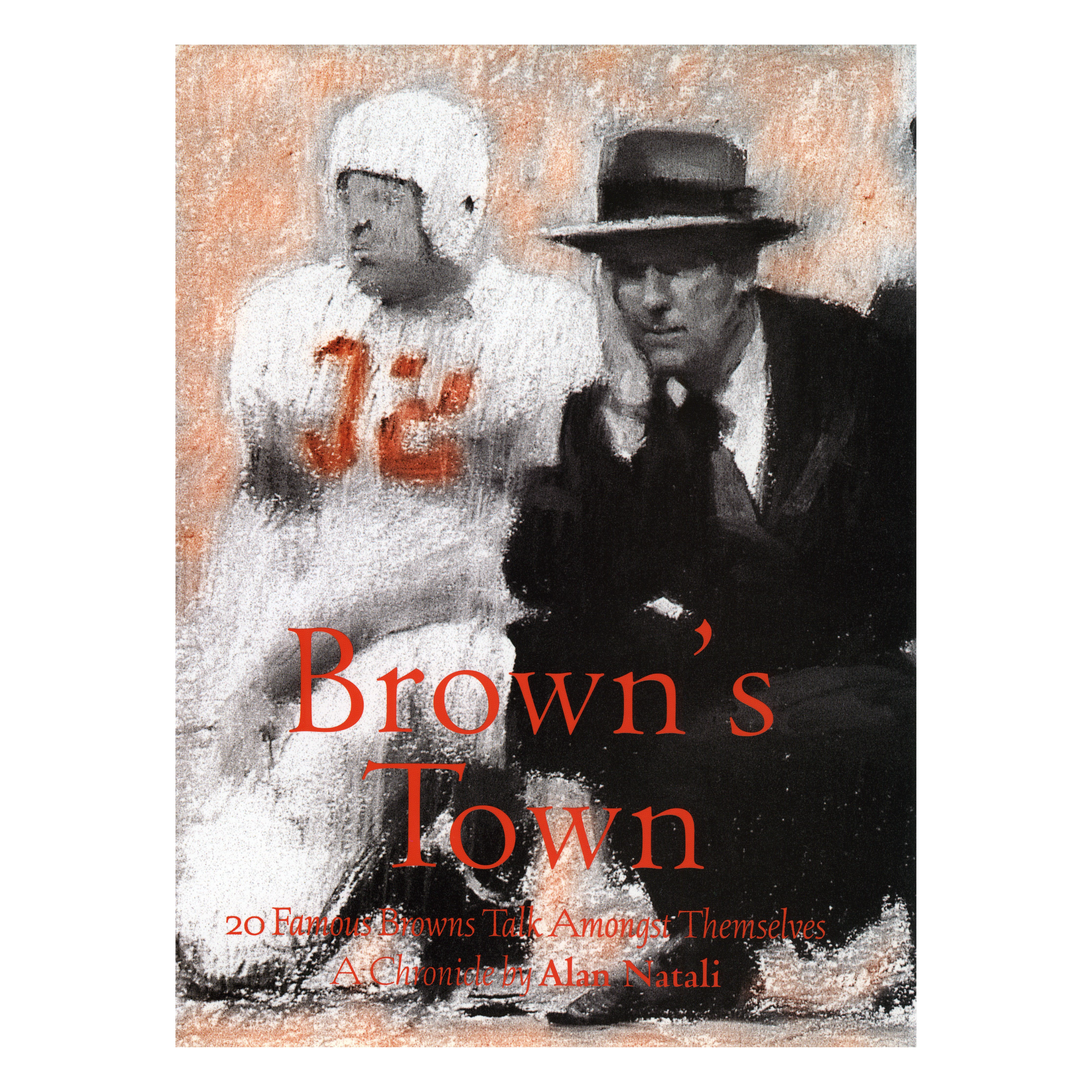 Image 1 of 1
Image 1 of 1


Brown’s Town: 20 Famous Browns Talk Amongst Themselves (First Edition, Autographed Copy)
FIRST EDITION, AUTOGRAPHED COPY BY THE LATE DANTE LAVELLI (6 COPIES AVAILABLE).
572 pages
7 × 10
Hardcover
ISBN 1-882203-615
Copyright 2001
By Alan Natali
“A figure of icy resolve,” he was called. Dictatorial and remote, he once scolded a player for yawning during halftime and cut rookies for the sin of slovenly attire. He was compared to both Thomas Jefferson and an undertaker. And yet the more perceptive understood that his true counterparts were the innovative business tycoons John D. Rockefeller and Henry Ford—men who found a better way to do something.
Paul Brown, the son of an Ohio railroad dispatcher, entered professional football in 1946 by way of Ohio State (where he won a national title) and Massillon High (where he developed the best prep team in America) and immediately set about applying modern corporate practices to what was a loose, almost intramural game. In his time, he singlehandedly revolutionized it—its management, its expression, and its technology. He invented the facemask, the messenger guard, detailed playbooks, and broke the major sport color line a year before Jackie Robinson entered major league baseball. “I take colored boys because I think they can win for me,” he said, after signing Bill Willis.
His original Browns in the All-American Conference are considered the greatest talent roundup in the history of pro sports. In 1950, in his first NFL game—when the Browns crushed the defending champions, Philadelphia—his offense proved itself to be the prototype of the modern pro offense.
FIRST EDITION, AUTOGRAPHED COPY BY THE LATE DANTE LAVELLI (6 COPIES AVAILABLE).
572 pages
7 × 10
Hardcover
ISBN 1-882203-615
Copyright 2001
By Alan Natali
“A figure of icy resolve,” he was called. Dictatorial and remote, he once scolded a player for yawning during halftime and cut rookies for the sin of slovenly attire. He was compared to both Thomas Jefferson and an undertaker. And yet the more perceptive understood that his true counterparts were the innovative business tycoons John D. Rockefeller and Henry Ford—men who found a better way to do something.
Paul Brown, the son of an Ohio railroad dispatcher, entered professional football in 1946 by way of Ohio State (where he won a national title) and Massillon High (where he developed the best prep team in America) and immediately set about applying modern corporate practices to what was a loose, almost intramural game. In his time, he singlehandedly revolutionized it—its management, its expression, and its technology. He invented the facemask, the messenger guard, detailed playbooks, and broke the major sport color line a year before Jackie Robinson entered major league baseball. “I take colored boys because I think they can win for me,” he said, after signing Bill Willis.
His original Browns in the All-American Conference are considered the greatest talent roundup in the history of pro sports. In 1950, in his first NFL game—when the Browns crushed the defending champions, Philadelphia—his offense proved itself to be the prototype of the modern pro offense.
